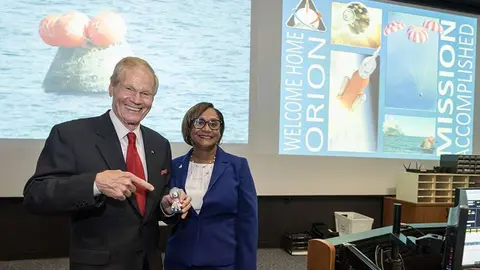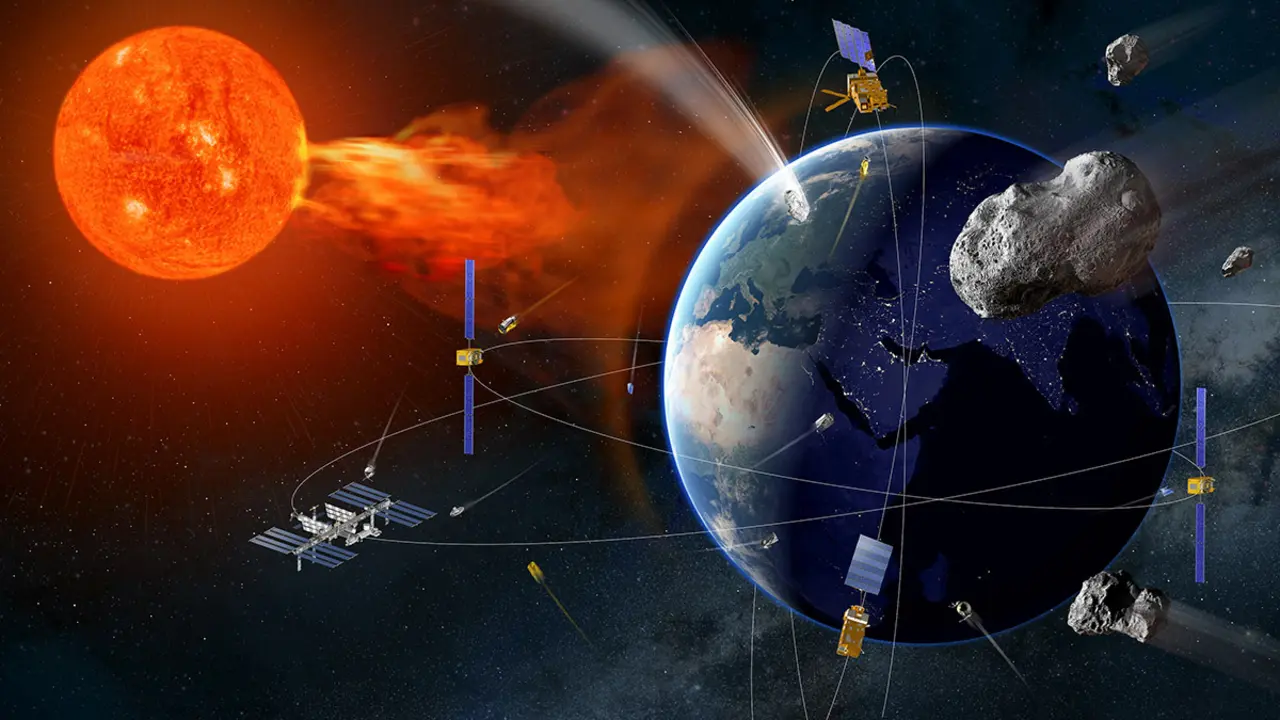Spain and five Ibero-American nations sign the Artemis Agreements to take astronauts to the Moon

The exploration of the Moon is so fashionable on the global geostrategic scene that the governments of Argentina, Brazil, Colombia, Ecuador, Mexico and even Spain have decided to take part in it.
The five Spanish-speaking nations and the country of Rio de Janeiro have expressed their desire to take part in the so-called lunar decade and have joined the Artemis Agreements, a set of principles that the United States has put on the table to promote cooperation and responsible behaviour in the exploration and non-military use of the Moon.
The Artemis Agreements are the framework devised by NASA, the National Space Council and the US State Department to demonstrate global space leadership and enable third countries to collaborate with varying degrees of participation in the new era of space exploration that is dawning before humanity's eyes. And the first step is the return of astronauts to the Moon.
The main novelty of the Artemis Agreements is that Washington's return to the Earth's natural satellite is not intended to be done alone, as occurred with the Apollo programme in the 1960s and 1970s. "The United States is returning to the moon, but not alone, as before, but accompanied by an international team", summarised the director general of the recently created Spanish Space Agency (ESA), Miguel Belló, on the occasion of the visit to Spain by NASA administrator Bill Nelson.
During his European tour, Bill Nelson stopped off in Spain on 29 May to visit the ESA headquarters in Seville and meet its directors. The following day he travelled to Madrid for a meeting with King Felipe VI and Prime Minister Pedro Sánchez. During his presence at the Moncloa, the Minister of Science and Innovation, Diana Morant, who is also President of the ESA, signed the Artemis Agreements that brought Spain into the club of signatories. She later met with the Minister of Defence, Margarita Robles.

The governance architecture remains to be defined
But what is President Sánchez's government committing to? The Artemis Agreements are a kind of practical decalogue of principles, guidelines and best practices to ensure safe and sustainable exploration of the Moon and beyond, as the scope, duration and safety of astronauts taking part in manned missions expands.
However, as Violeta Gandullo, a lawyer specialising in space law, stresses, the Artemis Agreements "are not binding from the point of view of international law, but that does not mean that they do not have a normative character, which they do, and their impact on society is enormous and positive".
In the last three months the agreements have been signed by the Czech Republic, India, Ecuador, Argentina and Spain, which as of 8 August brings the number of signatory nations to 27. Faced with such a large number of participants, NASA organised several workshops in the United States and London at the end of June and beginning of July for the countries to present their thoughts on the exploration of the Moon and the possible contributions of each nation. The Spanish Agency sent a representative, "but it has not yet been finalised what Spain's contribution will be", confirmed the ESA.

In essence, what are the principles of action advocated by the aforementioned agreements? They can be summarised in a dozen points, the first of which is to "ensure that space missions serve peaceful purposes in accordance with international law". It also calls for "transparency" in space exploration plans and policies, the pursuit of "interoperability" between different systems and technologies and "providing assistance" in the event of space emergencies, as outlined in the 1968 agreement on the return of astronauts.
They stress the need to "record" objects launched into space and to "disseminate" scientific data. In the pursuit of cordial relations, one of the stipulations calls for "avoiding harmful interference" between the lunar operations of different countries, as well as "avoiding" potential conflicts through the "creation of safety zones".

27 countries from five continents
It calls on signatories to "respect" UN guidelines on space debris mitigation and, in relation to heritage, to "protect" historically significant sites and artefacts on the Moon.
One of the paragraphs included in the agreements is the subject of much controversy in international space law. Some even call it "imperialist". Article 10.2 states that, in accordance with the 1967 Outer Space Treaty, "the signatories affirm that the extraction of space resources does not inherently constitute national appropriation under Article 2 of the Outer Space Treaty, and that contracts and other legal instruments relating to space resources should be compatible with that Treaty".

However, for some jurists, such content contravenes Article 2 of the 1967 Treaty - considered the Magna Carta of outer space - which states that "outer space, including the Moon and other celestial bodies, shall not be subject to national appropriation by claim of sovereignty, use or occupation, or in any other manner". Of course, China's and Russia's views are diametrically opposed to the agreements.
Be that as it may, the aim of the Artemis agreements, Violeta Gandullo points out, is "to facilitate research and exploration activities in outer space and to allow the development of commercial activities such as mining, which is one of the objectives of New Space and allows new private operators to enter into the exercise and development of space activities".

As of 7 August, the signatories to the Artemis Agreements numbered 27 countries, nine are NATO/European Union countries: Canada, the Czech Republic, France, Italy, Luxembourg, Poland, Romania, Spain and the United Kingdom; two others are the United States' main allies in Oceania: Australia and New Zealand. Eight are Asian, including four from the Middle East (Saudi Arabia, Bahrain, the Emirates and Israel) and four from the Far East: India, Japan, South Korea and Singapore.

Five are from Central and South America: Argentina, Brazil, Colombia, Ecuador and Mexico. Africa is represented by Nigeria and Rwanda. Ukraine is also a signatory. And the list is set to grow as NASA continues preparations for the first manned mission to the moon in the 21st century. If all goes well, it will be in November 2024, but not yet on the lunar surface, which is planned for the following year.











